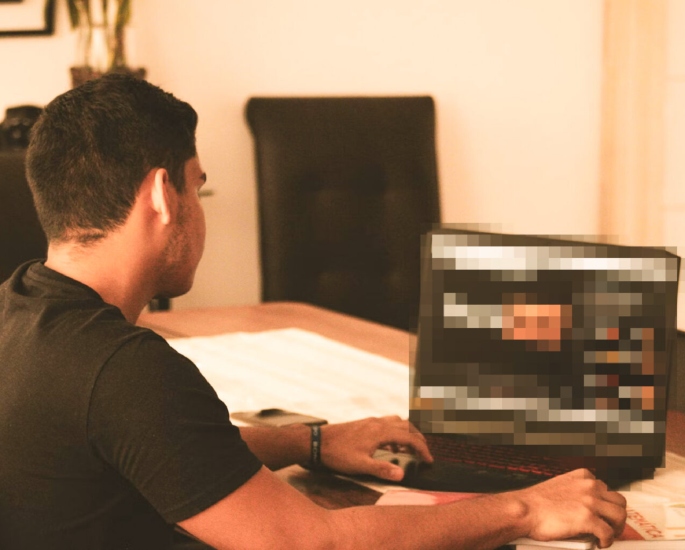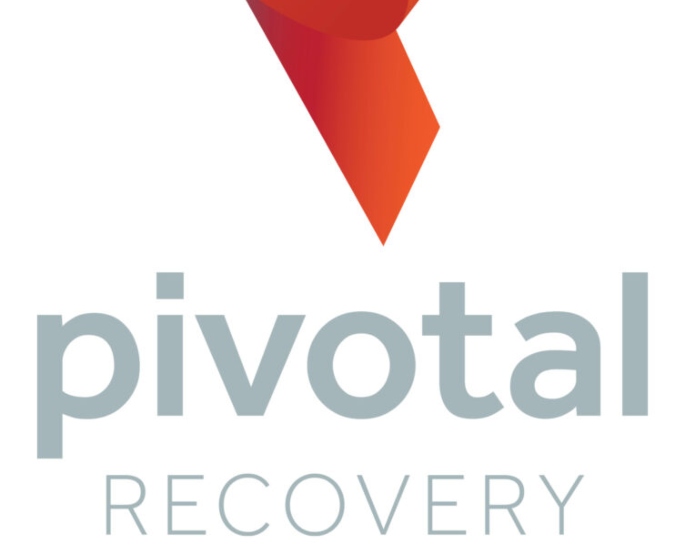Recognising and Treating Porn Addiction for South Asians

Porn addiction is a pervasive issue that affects individuals from various cultural backgrounds, including South Asians.
However, due to cultural and societal factors, discussions around this topic are often limited within these communities.
Although, this hasn’t stopped the rising number of people becoming addicted to porn.
For example, the UK Addiction Treatment Group (UKAT) found that 36,000 people in Britain seek their support in 2021.
This is a massive 250% rise from the 10,500 figure in 2020.
They also found that porn is the second highest addiction that men seek help for, with alcohol coming first.
Additionally, the percentage of women seeking help with porn rose from 25% to 38% during the same period.
These numbers show just how prevalent porn addiction is in the UK. But, it’s also as widespread in South Asia where adult material is consumed discreetly.
Due to the high demand yet stigma of porn, a lot of countries like India, Pakistan and Bangladesh have to cater to their needs in private.
This leads to over-consumption and inevitably, addiction.
However, due to the taboo nature of both porn and (any) addiction, it’s difficult for South Asians globally to receive any help, and will have to take their own steps toward recovery.
Therefore, DESIblitz has outlined the ways to recognise a porn addiction and the different methods of getting help.
Understanding Porn Addiction

Porn addiction, also known as compulsive sexual behavior or problematic sexual behavior, refers to an unhealthy reliance on pornography that leads to negative consequences in an individual’s life.
It is characterised by an inability to control or stop the consumption of explicit sexual material, despite adverse effects on relationships, work, and personal well-being.
According to a study published in the Indian Journal of Psychiatry (2019), the prevalence of problematic pornography use among young adults in India was found to be 52.5%.
Another study conducted in the UK by the Online Pornography Addiction Survey (2017) reported that 36% of South Asian respondents acknowledged viewing porn daily.
A further 44% admitted that it negatively impacted their daily lives.
Recognising porn addiction is crucial for both individuals and their loved ones.
Signs and symptoms of porn addiction may include increased isolation, neglect of responsibilities, failed attempts to quit or cut back, and a preoccupation with pornography that interferes with daily functioning.
In a survey conducted by Dr. Shyamala Nada-Raja and her colleagues (2016), it was found that South Asian women who consumed porn were more likely to report depression and feelings of low self-esteem.
This suggests that the effects of porn addiction can have a significant impact on mental health and overall well-being within the South Asian community.
Porn Addiction in South Asian Culture

Porn addiction is often considered a taboo topic within South Asian culture due to a combination of cultural and societal factors.
Some reasons that contribute to the taboo nature of porn addiction in South Asian culture are:
Cultural Values
South Asian cultures, influenced by various faiths, generally emphasise modesty, sexual restraint, and the sanctity of marriage.
Discussions around sexual matters, including pornography, are often seen as inappropriate or disrespectful to these cultural and religious values.
Conservatism and Moral Stigma
South Asian societies tend to be more conservative when it comes to discussing sexuality openly.
There is often a fear of moral judgment, social stigma, and the potential damage to an individual’s reputation or family honour associated with acknowledging or addressing porn addiction.
Family and Community Reputation
South Asian societies often place a high value on maintaining the family’s reputation and preserving community harmony.
Discussions about porn addiction may be perceived as bringing shame or dishonour to the family, leading to the suppression of open dialogue on the subject.
Lack of Sex Education
South Asian cultures have historically provided limited or inadequate sex education.
This contributes to a lack of understanding about healthy sexual behaviors and the potential risks associated with excessive porn consumption.
This lack of education further perpetuates the silence around porn addiction.
Gender Roles and Patriarchy
South Asian societies often uphold traditional gender roles and patriarchal structures, which can discourage open discussions about sexual issues.
This can make it particularly challenging for individuals, especially women, to seek help or share their struggles related to porn addiction without fear of judgment or victim-blaming.
It is important to note that these factors may vary within different communities and among individuals.
However, collectively, they contribute to the stigma and silence surrounding porn addiction in South Asian culture.
Overcoming this taboo requires fostering open-mindedness, promoting comprehensive sex education and creating safe spaces for individuals to seek treatment.
Personal Experiences

In order to shed light on how important this issue is and why more needs to be done within British Asian and South Asian communities, DESIblitz spoke to some individuals.
These people shared their experiences and stories with porn addiction to help combat the stigma around it.
34-year-old Harry Shah* from London told us:
“I grew up in a traditional South Asian household, where discussions about sex were nonexistent. As a young teenager, I stumbled upon porn out of curiosity.
“What started as innocent exploration gradually transformed into a consuming addiction that silently engulfed my life.
“The shame and guilt I felt were overwhelming.
“I was trapped in a cycle of secrecy, constantly hiding my addiction and living a double life.
“Every day, I battled with conflicting emotions.
“On one hand, I felt a desperate need to break free from the grip of porn, but on the other hand, cultural expectations and fear of judgment kept me chained.
“I yearned for support and understanding, yet the cultural stigma made it nearly impossible to seek help.
“My journey towards recovery was hard.
“It took immense courage to challenge societal expectations and find a safe space where I could share my struggles without fear of condemnation.
“Through therapy and support groups, I found solace in the stories of others who shared similar experiences.
“Connecting with fellow South Asians who understood the cultural complexities and hardships of battling porn addiction was a pivotal turning point in my recovery.
“It provided validation and strength, reminding me that I was not alone in this fight.”
We also spoke with 38-year-old Seema Patel*, who revealed:
“I found myself spiraling into porn addiction because I wasn’t having sex in real life.”
“It was like an escape to feel what everyone else was feeling and experiencing.
“But, even though it gave me a route to feel good sexually, I started to depend on it.
“Especially when my friends talked about having sex with their boyfriends or being intimate with their partners. I had no stories to share.
“It took a toll on my mental and emotional well-being.
“I felt trapped between my heritage, which emphasises how bad porn is, and the inner turmoil caused by my addiction.
“I longed for understanding, empathy, and a safe space to address my pain.
“I sought professional help and joined support groups where I encountered individuals from diverse backgrounds who were also battling porn addiction.
“Together, we shared our stories, provided comfort, and empowered one another.
“I engaged in open conversations with trusted friends and family members.
“At first they didn’t understand but taking that first step and not having fear is what I would urge everyone to do.”
Whilst these stories only touch the tip of the iceberg, it shows there are South Asians actively dealing with this addiction.
The issue is, having a space where these problems can be openly spoken about and therefore treated.
Treatment & Organisations to Help

Overcoming porn addiction requires a multifaceted approach that combines individual effort, therapy, and support from specialised organisations.
Treatment options may include:
Individual Therapy: Working with a licensed therapist who specialises in addiction can help individuals address underlying psychological factors and develop healthier coping strategies.
Group Therapy: Participating in group therapy or support groups can provide a sense of community, accountability, and shared experiences.
Technology Tools: Employing technology tools like Covenant Eyes, which provides filtering and accountability software, can assist individuals in managing their access to explicit content.
Cognitive-Behavioral Techniques: Cognitive-behavioral therapy (CBT) helps individuals identify and modify unhealthy thought patterns, behaviors, and triggers associated with their addiction.
Pivotal Recovery
The Pivotal Recovery Course is a comprehensive program designed to help individuals overcome unwanted sexual behaviors.
Created by Dr. Paula Hall, it follows the CHOICE Recovery Model and consists of 30 podcasts in Part 1 to stop addictive behaviors and 30 podcasts in Part 2 to stay stopped.
The course covers understanding addiction, challenging core beliefs, building motivation, overcoming triggers, establishing healthy sexuality, connecting with others, and building resilience.
Participants receive an accompanying workbook for personalised learning and progress tracking.
The course empowers individuals to reclaim their lives and make choices aligned with their values and goals.
See more here.
Priory Group
Priory offers porn addiction treatment through a combination of individual and group therapy.
These therapy sessions aim to address the addiction, identify triggers, and provide strategies to overcome urges to watch porn.
Individual therapy also explores underlying issues such as past trauma, difficult life events, and low self-worth that may contribute to the addiction.
The treatment approach at Priory is guided by the 12-Step philosophy, which is based on abstinence and was originally developed by Alcoholics Anonymous (AA).
This philosophy emphasises integrating spirituality and personal motivation to facilitate recovery from porn addiction.
Find out more here.
Recovery
Rehab treatment for porn addiction can last up to 12 weeks, with a minimum of four weeks being recommended for optimal results.
Completing the entire treatment program is crucial for long-term recovery, although individuals have the option to leave if they feel they are not ready.
Two main options for porn addiction rehab include:
Outpatient: This involves attending weekly appointments while residing at home. Group meetings at a designated center form a part of the support provided.
Inpatient: In this option, you stay at a rehab center and receive care from individuals who have gone through similar experiences.
Being in a different environment helps minimise exposure to triggers that may fuel cravings, allowing for clearer introspection and understanding of the underlying causes of addiction.
Get in touch with them here.
Porn addiction is a significant issue affecting South Asians and British Asians, with studies indicating high prevalence rates within these communities.
The cultural and societal factors surrounding these communities often contribute to the silence surrounding this addiction.
By raising awareness, promoting open conversations, and highlighting organisations that offer support, we can help break the silence and provide the necessary resources for individuals to seek help.





